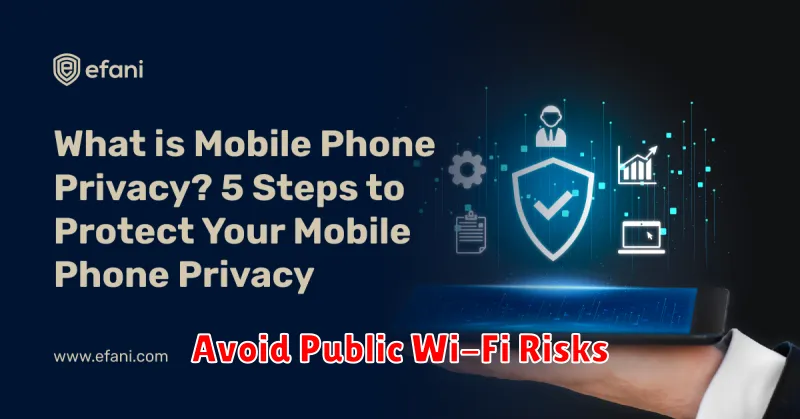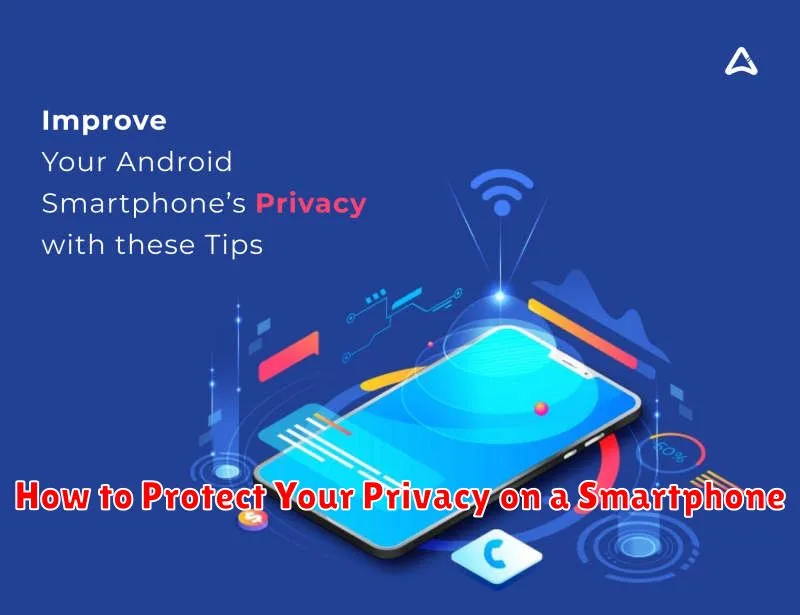In today’s interconnected world, smartphones have become indispensable tools, storing vast amounts of private information. From personal contacts and financial details to browsing history and location data, our privacy is increasingly vulnerable to digital threats. This article explores essential steps you can take to protect your privacy on your smartphone and safeguard your sensitive data from prying eyes. Learning how to enhance your smartphone privacy is crucial in mitigating risks and maintaining control over your personal information. We will delve into practical strategies to bolster your smartphone security and ensure your digital privacy.
Protecting your privacy on your smartphone is no longer optional, but a necessity. With the increasing sophistication of cyber threats and the pervasiveness of data collection, understanding how to secure your smartphone is paramount. This guide provides a comprehensive overview of effective techniques and best practices to enhance your mobile privacy. From adjusting privacy settings to installing reliable security software, we’ll equip you with the knowledge and tools necessary to maintain your digital privacy in the smartphone era. By implementing these strategies, you can significantly reduce your vulnerability to privacy breaches and safeguard your personal information.
Use Strong Passcodes and Biometrics
One of the most effective ways to safeguard your smartphone’s data is by employing a strong passcode. Avoid easily guessable combinations like “1234” or birthdates. Instead, opt for longer, more complex passcodes that include a mix of uppercase and lowercase letters, numbers, and symbols.
Biometric authentication, such as fingerprint or facial recognition, offers an added layer of security and convenience. While generally secure, understand that biometrics are not foolproof. Consider the security implications of using biometrics on your device and choose the method that best suits your needs and risk tolerance. Enable a strong passcode as a backup for situations where biometric authentication isn’t available or fails.
Review App Permissions Regularly
Mobile apps often request access to various features and data on your smartphone. It’s crucial to periodically review these permissions to ensure they align with your privacy preferences. Over time, you may have granted access that is no longer necessary.
Regularly check the permissions granted to each app. Most smartphone operating systems offer a centralized location in the settings where you can manage app permissions. Revoke access to any features or data that an app doesn’t genuinely require to function. Pay particular attention to permissions related to your camera, microphone, location, contacts, and storage.
Enable Two-Factor Authentication
Two-factor authentication (2FA) adds an extra layer of security to your accounts. It requires not only your password but also a second factor, typically a code from an authentication app or a text message, to verify your identity. This makes it significantly more difficult for unauthorized individuals to access your accounts, even if they obtain your password.
Most major online services and apps, including email, social media, and banking, offer 2FA. Activating 2FA is usually straightforward. Look for the security or privacy settings within the app or service, then locate the two-factor authentication option. You will typically be guided through the setup process, which may involve scanning a QR code with an authentication app or providing your phone number to receive verification codes via SMS.
While slightly less convenient than simply entering a password, 2FA drastically improves your account security and is strongly recommended for all sensitive accounts.
Limit Location Tracking

Location services, while convenient, can share a significant amount of data about your whereabouts. Limiting location tracking is a crucial step in protecting your privacy.
Review your app permissions. Many apps request access to your location even when it’s not essential for their functionality. Disable location access for apps that don’t require it.
Utilize your device’s location settings. Most smartphones offer options beyond simply “on” or “off.” Consider using “While Using the App” instead of “Always Allow” to minimize background location tracking.
Be mindful of location tagging in photos and social media posts. This data can inadvertently reveal personal information about your home, work, or frequent locations.
Secure Your Messaging Apps
End-to-end encryption should be a primary consideration. This ensures only you and the recipient can read your messages. Verify that your chosen app utilizes this feature.
Regularly update your messaging apps. Updates often include security patches that address vulnerabilities.
Be mindful of app permissions. Only grant access to necessary features like camera or microphone when absolutely required during communication.
Two-factor authentication adds an extra layer of security. Enable this feature to prevent unauthorized access, even if someone obtains your password.
Exercise caution with message forwarding. Be aware of the information you are sharing and with whom.
Regularly Clear Browsing Data
Clearing your browsing data is a crucial step in maintaining your online privacy. This simple action removes saved information from your browsing sessions, which can include your browsing history, cookies, cached images and files, and saved passwords (if opted for). This data can be used to track your online activity and build a profile of your interests.
Most mobile browsers offer an option to clear data within their settings. You can typically choose to clear everything or select specific data types to remove. Consider clearing your browsing data at least weekly to minimize the amount of information stored on your device.
Regularly clearing this information reduces the digital footprint you leave behind, making it harder for third parties to track you across the web.
Use VPN Services for Privacy
A Virtual Private Network (VPN) encrypts your internet traffic and masks your IP address, making it significantly more difficult for third parties to track your online activities. This is especially important when using public Wi-Fi, which is often unsecured.
VPNs provide an added layer of security by shielding your data from potential eavesdroppers and hackers. By routing your connection through a secure server, a VPN hides your real location and makes it appear as though you’re browsing from a different location. This helps prevent websites and apps from tracking your browsing history and collecting personal data.
When choosing a VPN, consider factors like its logging policy, server locations, and connection speed. Opt for a reputable provider with a clear no-logs policy to ensure your online activity remains private.
Avoid Public Wi-Fi Risks

Public Wi-Fi hotspots are convenient, but they pose significant security risks. These networks often lack adequate encryption, leaving your data vulnerable to interception by malicious actors. Avoid accessing sensitive information like online banking or shopping accounts while connected to public Wi-Fi.
If you must use public Wi-Fi, consider using a virtual private network (VPN). A VPN creates a secure, encrypted connection, shielding your data from prying eyes. Be sure to choose a reputable VPN provider for optimal protection.
Disable Unnecessary Features
Smartphones often come with numerous features enabled by default, many of which collect data and potentially compromise your privacy. Disabling unused features is a crucial step in protecting your information.
Consider disabling the following:
- Location services: Only enable location services for apps that absolutely require it. Many apps request location access unnecessarily.
- Bluetooth: Keep Bluetooth off when not in use to prevent unauthorized connections and data leakage.
- Microphone access: Restrict microphone access to only essential apps like voice recorders or communication platforms.
- Camera access: Similar to microphone access, limit camera access to only the apps that genuinely require it.
- Personalized ads: Disable personalized ads in your device’s settings to prevent targeted advertising based on your data.
Regularly review app permissions and disable access to sensitive data for apps that don’t require it. This proactive approach significantly enhances your smartphone privacy.
Monitor Security Alerts and Updates
Staying informed about security vulnerabilities and updates is crucial for maintaining your smartphone’s privacy. Regularly check for security alerts issued by your device’s manufacturer and operating system provider. These alerts often contain crucial information about newly discovered threats and recommended actions.
Software updates play a vital role in patching security flaws. Enable automatic updates whenever possible to ensure your device receives the latest security enhancements promptly. Pay close attention to update notifications and install them as soon as they become available.
Be wary of unofficial app stores and only download apps from trusted sources like the official app store for your operating system. Malicious apps can disguise themselves as legitimate ones and compromise your privacy. Check app permissions carefully before installation and avoid granting unnecessary access.

